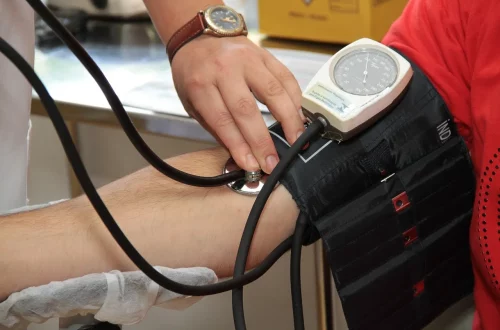
Effective Cataract Drops for Dogs: A Comprehensive Guide for Pet Owners
Cataracts in dogs can be a distressing condition for both pets and their owners. As a progressive eye disorder, cataracts can lead to impaired vision and, in some cases, complete blindness if left untreated. This condition typically develops as a result of aging, genetics, or underlying health issues such as diabetes. Pet owners often notice cloudiness in their dog’s eyes, which may be accompanied by changes in behavior, such as bumping into objects or hesitating to navigate familiar surroundings.
Understanding cataracts and their implications is crucial for responsible pet ownership. For many, the idea of surgery may be daunting or financially prohibitive. Fortunately, there are alternative treatments available, including cataract drops that can help manage the condition. These drops are designed to either slow the progression of cataracts or provide symptom relief, making daily life more comfortable for affected dogs. As pet owners, it’s essential to be informed about the options available for our furry companions, ensuring they receive the best care possible.
With proper knowledge and timely intervention, it’s possible to enhance the quality of life for dogs suffering from cataracts. This guide aims to explore the various aspects of cataract treatment in dogs, focusing on effective cataract drops and their role in managing this common condition.
Understanding Canine Cataracts: Causes and Symptoms
Cataracts form when proteins in the lens of the eye clump together, causing cloudiness that disrupts light transmission. In dogs, cataracts can arise due to several factors, including genetic predisposition, age-related changes, or underlying health issues. For instance, certain breeds, such as the Labrador Retriever, Boston Terrier, and Cocker Spaniel, are more prone to developing cataracts due to hereditary factors.
Recognizing the symptoms of cataracts is crucial for early detection and intervention. Pet owners should be vigilant for signs such as cloudy or opaque eyes, changes in behavior, and difficulty seeing in low light conditions. Dogs may also exhibit signs of confusion or disorientation, especially in familiar environments. In advanced cases, cataracts can lead to additional complications, such as inflammation or glaucoma, necessitating immediate veterinary attention.
Regular eye examinations are essential, particularly for breeds at higher risk for cataract development. During these check-ups, veterinarians can assess the health of a dog’s eyes and recommend appropriate treatment options if cataracts are detected. Early diagnosis can significantly improve the chances of successful management, whether through drops, lifestyle adjustments, or surgical intervention.
The Role of Cataract Drops: How They Work
Cataract drops are an innovative approach to managing cataracts in dogs. These drops typically contain ingredients that aim to support eye health and potentially slow the progression of cataract formation. While they may not fully reverse the condition, they can help mitigate the symptoms and enhance the dog’s quality of life.
Most cataract drops work by promoting lens transparency and reducing oxidative stress within the eye. Ingredients such as N-acetylcarnosine, a peptide that may help protect and rejuvenate lens cells, are commonly used in these formulations. When used consistently, cataract drops can help maintain clearer vision for dogs, allowing them to engage more fully in their daily activities.
It’s important to note that results can vary between individual dogs. Factors such as the severity of the cataract, the dog’s overall health, and adherence to the treatment regimen can influence the effectiveness of the drops. Additionally, cataract drops typically take time to show results, so patience and consistency are essential.
Before starting any treatment, pet owners should consult a veterinarian who can recommend the most suitable product based on the specific needs of the dog. A veterinarian will also guide the owner on how to administer the drops properly, ensuring the best possible outcome for their canine companion.
Choosing the Right Cataract Drops for Your Dog
Selecting the appropriate cataract drops for your dog can be a daunting task given the multitude of products available on the market. It’s essential to look for high-quality, veterinarian-recommended drops that contain effective ingredients. Consulting with a veterinarian will provide valuable insights into which drops are most suitable for your dog’s specific condition and needs.
When evaluating cataract drops, consider the following factors:
1. **Ingredients**: Look for drops that contain clinically-studied ingredients known for their efficacy in managing cataracts. N-acetylcarnosine is one of the most researched components and is often associated with positive outcomes.
2. **Brand Reputation**: Choose products from reputable brands that have a history of positive customer feedback and transparent ingredient sourcing. Trusted brands are more likely to adhere to quality standards.
3. **Customer Reviews**: Reading reviews from other pet owners can provide insight into the product’s effectiveness and ease of use. Look for testimonials that discuss specific improvements in vision and overall quality of life.
4. **Veterinary Recommendations**: Always prioritize products that your veterinarian recommends. They have the expertise to guide you toward the most effective treatments based on your dog’s unique situation.
5. **Proper Usage Instructions**: Understanding how to correctly administer the drops is crucial for their effectiveness. Ensure that the product comes with clear instructions and consult your veterinarian if you have any questions.
By taking the time to research and select the right cataract drops, pet owners can make a meaningful difference in their dog’s eye health and well-being.
Complementary Treatments and Lifestyle Adjustments
In addition to cataract drops, various complementary treatments and lifestyle adjustments can support a dog’s eye health. Maintaining a healthy diet rich in antioxidants, such as vitamins E and C, can help protect against oxidative damage that contributes to cataract formation. Incorporating omega-3 fatty acids into your dog’s diet can also promote overall eye health.
Regular vet check-ups are essential for monitoring the progression of cataracts and adjusting treatment plans as needed. Keeping your dog’s environment safe and familiar can help minimize the risk of accidents due to impaired vision. Providing adequate lighting in your home can also assist your dog in navigating their surroundings more comfortably.
Engaging in gentle exercise tailored to your dog’s capabilities can promote overall health and well-being, which in turn can support eye health. Activities such as leash walks in familiar areas can help keep your dog active and mentally stimulated without overwhelming them.
In some cases, alternative therapies such as acupuncture or herbal supplements may also be beneficial. However, it is crucial to discuss any complementary treatments with your veterinarian to ensure they are safe and appropriate for your dog.
By combining cataract drops with a holistic approach to eye care, pet owners can enhance their furry companions’ quality of life and potentially slow the progression of cataracts.
—
This article is intended for informational purposes only and does not constitute medical advice. If you suspect that your dog has cataracts or any health issues, please consult a qualified veterinarian for professional guidance and treatment options.




